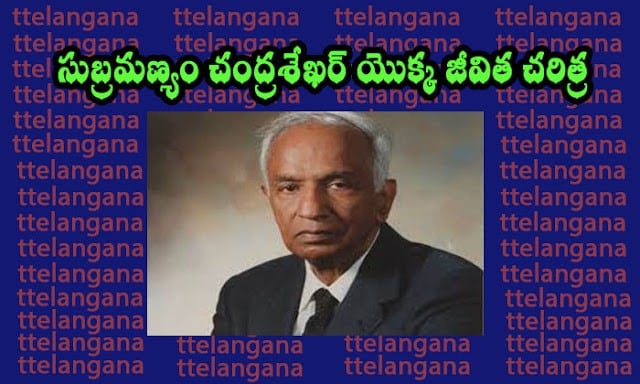Biography of Subramaniam Chandrasekhar
Born: 19 October 1910
Died: 21 August 1995
Achievements: The discovery of the ‘Chandrasekhar limit’ brought Him the Nobel Prize in Physics in 1983.
Subramanian Chandrasekhar was one the most renowned scientists of the 20th century. He was a great researcher in astronomy, physics, and applied math. Chandrasekhar received his Nobel Prize in Physics in 1983. Chandrasekhar was the son of a great Indian researcher as well as a Nobel laureate in Physics CV Raman. Chandrasekhar was a believer in the universal human tradition. According to Chandrasekhar, “It is a fact that the human mind functions only in one direction. Another aspect that is derived from this perspective is that factors that keep us smiling can make people from all parts of the world satisfied. Therefore, we all have an interest in common. ” Chandrasekhar was a great scientist, an excellent educator, and a scholar of a high standard.
The first step is life.
Subramanian Chandrasekhar was born on 10 October in Lahore. The father of the child, Chandrasekhar Subramanya Iyer was an official in the Audit Department of the Government of India. His mother is an educated person. Chandrasekhar was the son of the legendary Indian researcher who was also the Nobel laureate in Physics CV Raman. At the age of twelve, Chandrasekhar studied under the guidance of his parents as well as a private instructor. When he was 12 years old, he entered Hindu High School. The year 1925 was the time he enrolled in Presidency College, Madras. Subramanian Chandrasekhar earned his degree in Physics in the year 1930. In July of 1930, he was awarded an award by the Government of India to study at Cambridge University in England.
He is a Ph.D. Completed in 1933. He was then chosen for the Trinity College Fellowship. The period for this fellowship was from 1933 to 1937. He visited Harvard University when he was offered a position as a research associate at the University of Chicago, which was accepted by him. In September of 1936, Subramanian Chandrasekhar married Lomita Doraiswamy who was his senior at Presidency College, Madras.
.
Carrier
He was a professor for the majority of his professional life in his home at the University of Chicago. There, he worked working at Yerkes Observatory and was the editor for The Astrophysical Journal. He was a professor at the University of Chicago from 1937 until his death in the year 1995. He was admitted to the United States of America in 1953.
His most notable accomplishment in the astronomy field stemmed from a concept he developed that was referred to as”the “Chandrasekhar Limit”. This led to the debate about how to determine the age limit for a cluster of stars known as ‘white dwarfs. Subramanian Chandrasekhar performed a variety of important research in the field of Astronomy. In addition to astrophysics, the famous astronomer also performed advanced research and also worked in the field of astro-mathematics. The year 1983 was the time he received the Nobel Prize in Physics for his work in the “Cooling and shrinking Interstellar Condensation Process”. Neutron stars and “black holes’ were found by rendering the limit of Chandrasekhar.
Alongside identifying the Chandrasekhar limit Subramanian Chandrasekhar’s main contributions to science were: Theory of Brownian Motion (1938-1943); the Theory of the Illumination and the Polarization of the Sunlit Sky (1943-1950); General Principles of Relativity and Relativistic Astrophysics (1962-1971) and Mathematical Theory of Black Holes (1974-1983).
The path of Chandrasekhar’s life and profession was not an easy one. He was confronted with various challenges, but none were not significant to him. He was a person shaped by the complex nature of three different cultures in India (where his birthplace was), England, and the USA.
About 50 students have completed their Ph.D. under his supervision and guidance. His interaction with his students is reminiscent of the Guru-disciple model. His students admired him tremendously However, he always insisted that they maintain their views strong.
Biography of Subramaniam Chandrasekhar
Nobel Prize
Prof. S Chandrasekhar was awarded the Nobel Prize in Physics in 1983 for his work in the evolution and formation of stars. Even though he accepted the award, however, the announcement of his participation in the Nobel Prize only described his initial work which he was not happy about.
Awards and Honours
1944: Became a Fellow of the Royal Society
1949: Henry Norris Russell Lectureship
1952: Bruce Medal
1953: Awarded the Gold Medal of the Royal Astronomical Society
1957: Awarded the Rumford Prize of the American Academy of Arts and Sciences
1966: National Medal of Science, United States
1968: Awarded Padma Vibhushan by the Government of India
1971: Henry Draper Medal by the National Academy of Sciences
1983: Nobel Prize in Physics
1984: Copley Medal of the Royal Society
1988: Honorary Fellow of the International Academy of Science
1989: Gordon J. Long Award, Humboldt Prize
Tags: biography of subramaniam chandrasekhar subrahmanyan chandrasekhar biography dr. subrahmanyan chandrasekhar subrahmanyan chandrasekhar known for subrahmanyan chandrasekhar facts subrahmanyan chandrasekhar accomplishments subrahmanyan chandrasekhar parents subrahmanyan chandrasekhar family chandra subramaniam about subrahmanyan chandrasekhar interesting facts about subrahmanyan chandrasekhar biography of two indian mathematician subrahmanyan chandrasekhar limit subrahmanyan chandrasekhar pronunciation subrahmanyan chandrasekhar birthplace facts about subrahmanyan chandrasekhar
